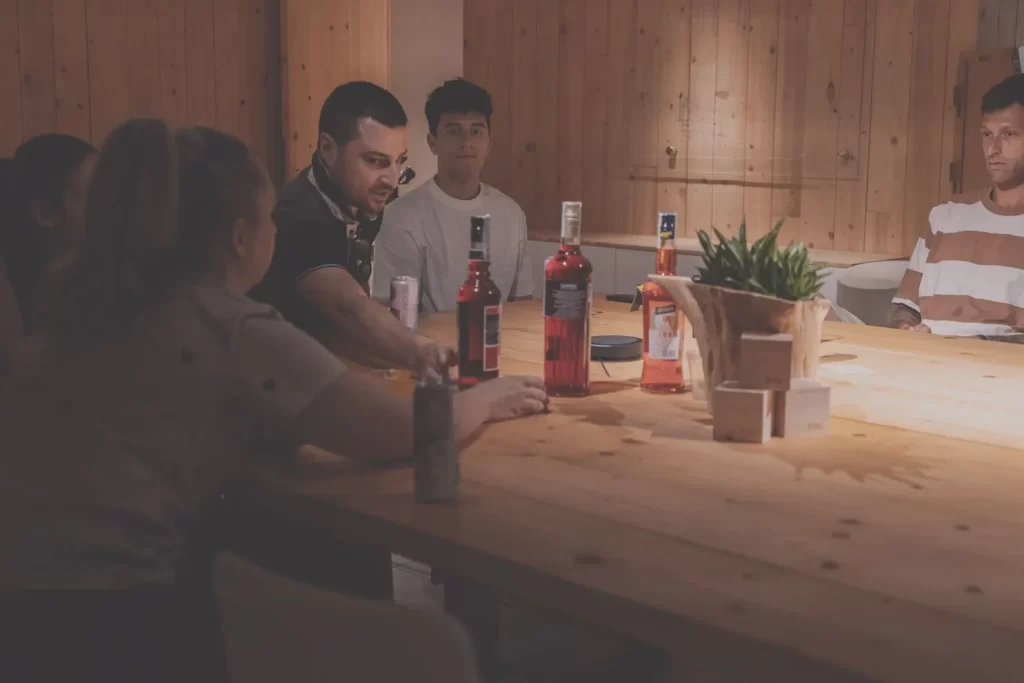A journey into the alcoholic beverage industry that unites bartenders and consumers to reveal – through listening – the connections between product quality and brand perception.

In the world of aperitif drinks, understanding what makes the experience unique goes far beyond simple tasting. It is a sensory journey that starts from distribution and reaches consumers’ homes, intertwining perceptions, emotions and choices.
Once again, in one of our “Open Places“, we have created a space where the voices of those who live the ritual of the beverage world on a daily basis could emerge and guide us towards a deeper understanding of this sector.
Three iconic aperitif brands
Aperol, Campari and Select are names that resonate in the daily life of us Italians, telling a story of rituals and traditions that are renewed every day.
These brands represent a unique combination of flavors and colors and above all symbolize a mix of memories and experiences that resonate in the minds of those who know them. But what lies behind these powerful associations? What really determines the choices of consumers and industry professionals?
To answer these questions, we hosted a dual target of people at the TSW headquarters: on one side the distribution network, represented by bartenders and bar owners, on the other the end customer. The goal? To investigate the experience with the product and with brand communication, exploring the connections that link the quality of the product and the perception of the brand.

Listening: together with Select customers
The focus group involved participants aged between 21 and 45, allowing for the collection of different perspectives, from the visions of Generation Z to those of a more mature audience, offering a representative picture of the current market.
This methodology has allowed us to explore the brand experience in depth, revealing how apparently secondary elements – such as the label, the color or even the sound of the product name – can significantly and almost subconsciously influence the perception of taste and purchasing choices.
The drivers of choice
While on the one hand product quality maintains its centrality in the decision-making process, on the other hand the role of brand identity, built through communication strategies and market presence, emerges forcefully.
Purchasing decisions were found to be strongly influenced by three factors:
- The association with specific moments of the day (with the most bitter aperitifs preferred after dinner).
- The territorial connection together with the perceived authenticity of the brand.
- Social media presence and the ability to build engaging narratives (particularly relevant for Gen Z).

Emerging Insights
The analysis also revealed interesting trends in generational preferences:
- Gen Z (born between 1995 and 2010) shows a preference for Aperol, appreciating its sweeter taste and social communication focused on moments of conviviality.
- The over 30 target prefers stronger flavours, with Campari standing out in the sector thanks to its elegant positioning and its “Red Passion”
- Select stands out for its authentic connection with Venice and for a label that communicates history and tradition. However, the opportunity to strengthen communication towards the new generations emerges, defining the target audience more clearly and amplifying those distinctive values that already characterize it in the beverage panorama.
In this scenario, it becomes essential for brands to be able to authentically communicate their values and identity.
An effective communication strategy, such as the study of an original label or eye-catching packaging, not only amplifies the visibility of the brand, but also creates a connection with the public, transforming simple knowledge of the brand into consideration.
Towards a perspective of authentic experiences
Observing these dynamics closely allowed us to capture precious nuances: the spontaneous expressions during tasting, the habitual gestures in preparation, the stories that emerge naturally between one tasting and the next. It is precisely these details, apparently small, that contain the true value of the experience.
Exploring the world of Spirits – as well as our research conducted in the chocolate sector or in the toy sector – has revealed a fundamental truth: behind every choice there is a story, an experience.
At TSW we believe that the future of companies, whatever the sector, lies in the ability to integrate real listening to people’s experiences into stories and communication in a broader sense. It is not simply about proposing a product, but about helping to create real meaningful moments in people’s daily lives.
Listening, understanding and engaging people is not just a business strategy, but a way to improve the quality of the experience that allows companies to stand out and be chosen naturally.